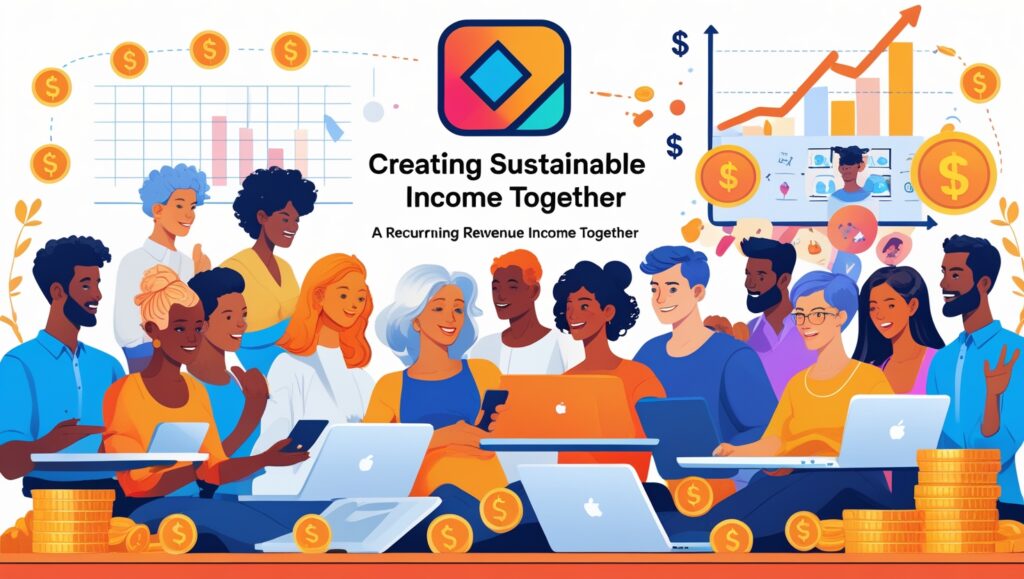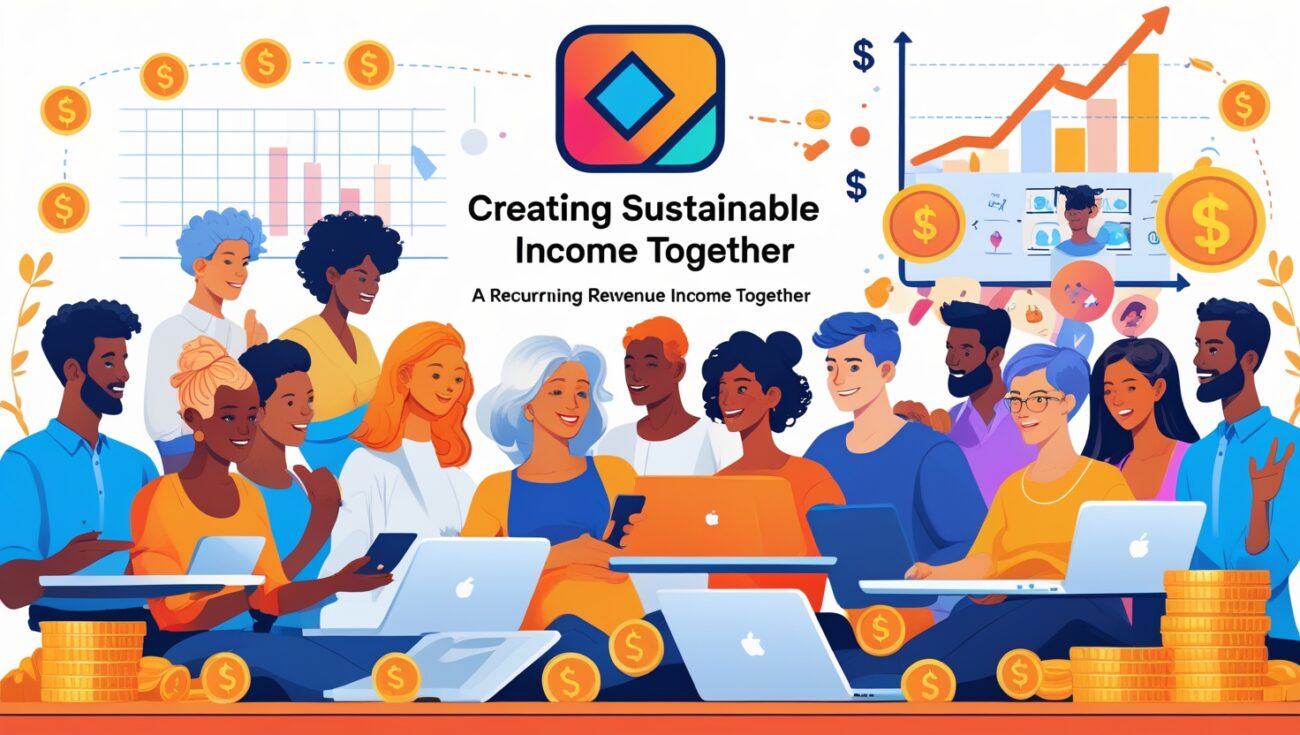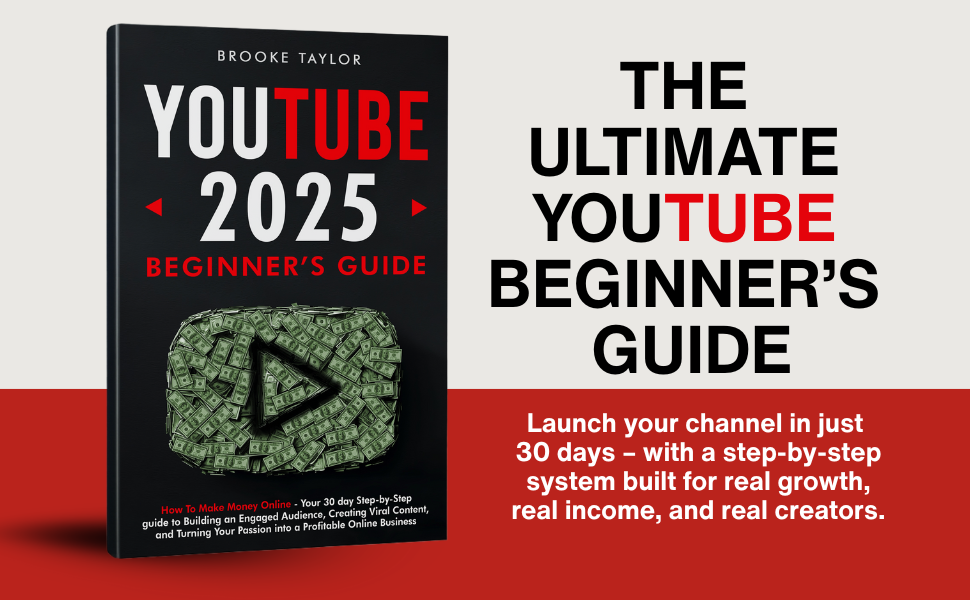How to Create a Recurring Revenue Stream with a Community
When I started selling digital products and services, most of my income came from one-time sales. I’d hustle hard to get a sale, deliver the product, and then start all over again the next month. It was exhausting. I knew I needed something more stable — something I could build once and keep growing.
That’s when I discovered the power of recurring revenue through a community. It changed everything for me. I stopped chasing new customers every week and focused on serving the ones I already had. And the results? More income, more freedom, and less stress.
In this post, I’ll show you how I built a recurring income stream using Skool, the all-in-one platform I use to host my paid community. If you want to stop trading time for money and finally build a business that compounds over time, this is for you.

Table of Contents
Step 1: Choose a Platform That Supports Memberships
Most people make the mistake of picking a course platform that’s not built for real community. They upload videos, slap on a Stripe checkout, and wonder why people don’t stick around.
What I did differently was choose Skool — a platform built from the ground up for engagement and retention. It has:
- A classroom for hosting your content
- A community feed that looks like a private social network
- A calendar for live calls or coaching sessions
- A built-in payment system so people can subscribe monthly
It’s not just software. It’s a system designed to help you grow.
Step 2: Define a Simple Monthly Offer
You don’t need to overcomplicate this. I started by asking myself, “What transformation can I help people achieve each month?” That became the core of my community.
I offered:
- Monthly live Q&A calls
- Access to a private forum for support
- Weekly lessons or behind-the-scenes strategies
- Accountability threads
That’s it. No 100-video course. Just consistent value they couldn’t get elsewhere.
Step 3: Set a Price That Reflects the Value
Pricing your community can be tricky. Some go too low, some go too high. I found that $49–$99/month is a sweet spot for most niches. It’s affordable but still serious enough that members stay committed.
Skool lets me set up monthly or yearly billing with no extra tools needed. I don’t have to connect Zapier, Stripe, or deal with tech headaches. I just turn on subscriptions and start collecting payments.
Step 4: Launch With 10 Founding Members
Before going public, I invited 10 people I knew personally or from my email list. I offered them lifetime access for a flat fee or a heavily discounted subscription if they’d give feedback and testimonials.
Getting those first 10 members was all the validation I needed. They asked questions, shared wins, and gave me ideas to improve. That interaction made the community better, which helped me attract more people over time.
Step 5: Deliver Consistent Value and Let the Community Grow Itself
What I learned quickly is that people don’t stay for information — they stay for connection. Inside Skool, members can post wins, ask questions, and support each other. That means it’s not all on me. The group has a life of its own.
Every month, I post a new lesson, host one live call, and check in on the threads. That’s enough to keep engagement high without burning myself out. And since Skool rewards active members with points, people naturally want to participate more.
Step 6: Promote with Integrity and Simplicity
I promote my Skool group in my blog posts, YouTube videos, and newsletter. I don’t use hype. I show how it works, what members get, and how it’s changed my own business. That transparency builds trust and drives recurring signups.
If you want to start your own recurring revenue community, click here to create your Skool account. That’s the platform I personally use, and it’s helped me generate consistent income without tech stress or sales burnout.
Another thing I realized early was that people don’t just pay for information — they pay for access and transformation. They want to be part of something bigger, something that keeps them motivated. That’s what your community should deliver month after month.
When I launched my Skool group, I made sure to onboard new members in a way that made them feel welcome. I posted a pinned welcome message, encouraged introductions, and created a short “start here” guide in the classroom. That boosted retention right away.
What I love about Skool is that it’s designed to reward interaction. Members earn points when they post or comment, which builds momentum in your group. I’ve seen communities grow faster just because people want to climb the leaderboard — it’s simple but powerful psychology.
Also, don’t worry if your audience is small. I started mine with under 500 email subscribers. What matters is that your offer is clear and your promise is real. Even 10–20 paying members at $99/month can change your income overnight.
I also bundled a mini-course inside the community, which increased the perceived value instantly. You can record just 2–3 short lessons showing people how to get started with your method or strategy. Skool’s classroom makes it easy to organize that.
A recurring revenue stream only works if people actually stay. So every month, I ask myself: what’s one new piece of value I can add? Sometimes it’s a new Q&A, a downloadable template, or a member spotlight. The goal is to give them a reason to stick around — not just sign up.
Another tip: always overdeliver in your first month. When people join and immediately feel supported, they’re way more likely to become long-term members. I try to respond to every post, tag members who are quiet, and cheer on the ones taking action.
One thing I don’t do is chase people who cancel. I treat cancellations as feedback. I’ve added exit surveys to ask why they left. That info has helped me refine my content, update my offer, and even improve the sales page for new members.
You don’t need a funnel to make this work. My process is super lean: one landing page, one Skool community, and one email follow-up sequence. That’s it. If I can build this without complicated tech, so can you.
And unlike traditional course platforms, Skool gives you ownership of your group. No distractions, no noisy feeds, no ads. Your members stay focused on your content and your community — and that’s what drives results.
If you’re wondering how to price your community, test different models. You can start with monthly billing, then offer a quarterly or annual option later. Some of my members chose yearly just to commit longer, and that created more stability in my income.
Finally, don’t overthink your first launch. The key is starting. Once your community is live and a few people are inside, you’ll get feedback, momentum, and clarity. Click here to start your own recurring revenue community with Skool. It’s the same platform I trust, and I believe it’s the best one out there right now for creators like us.






